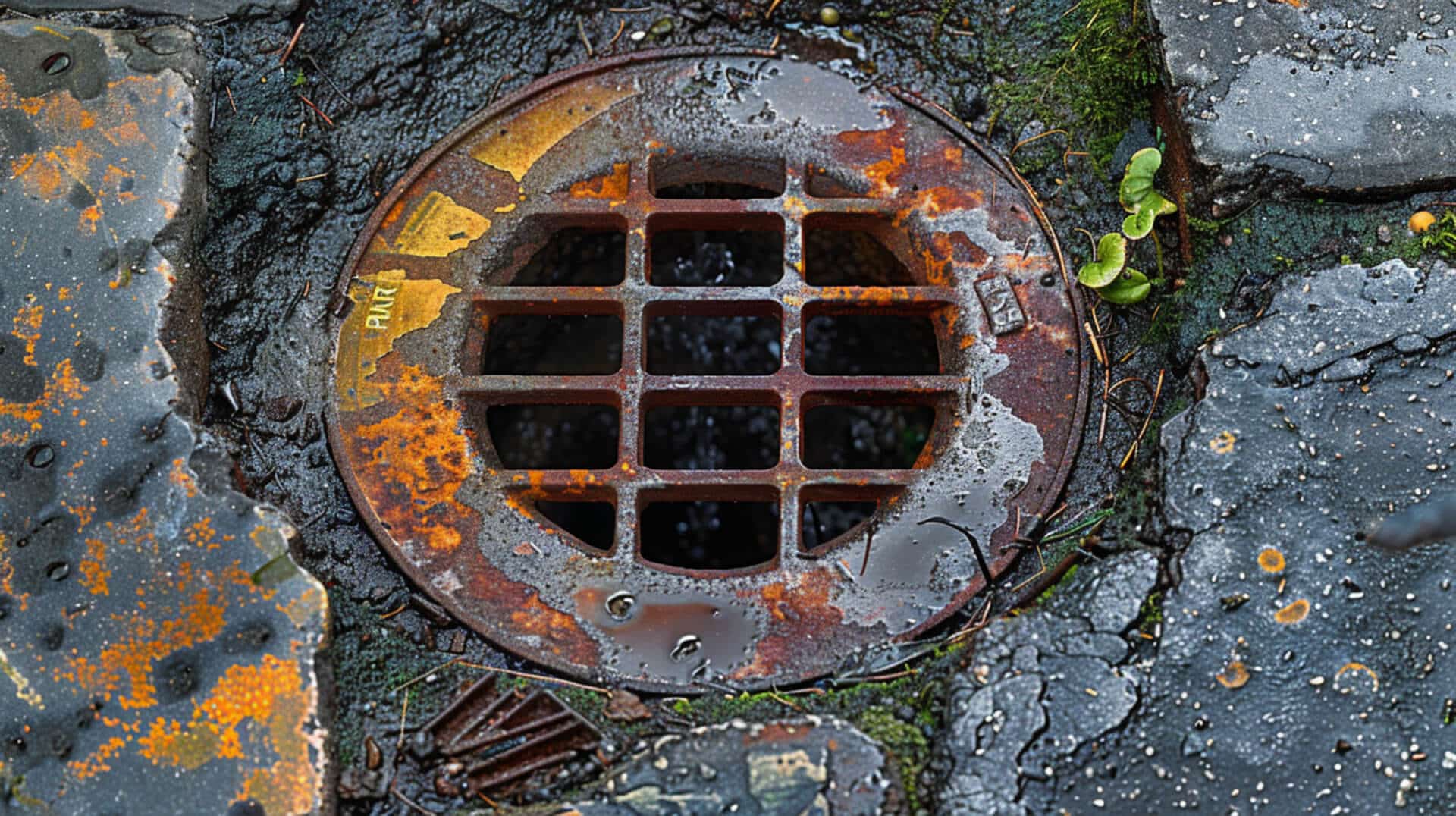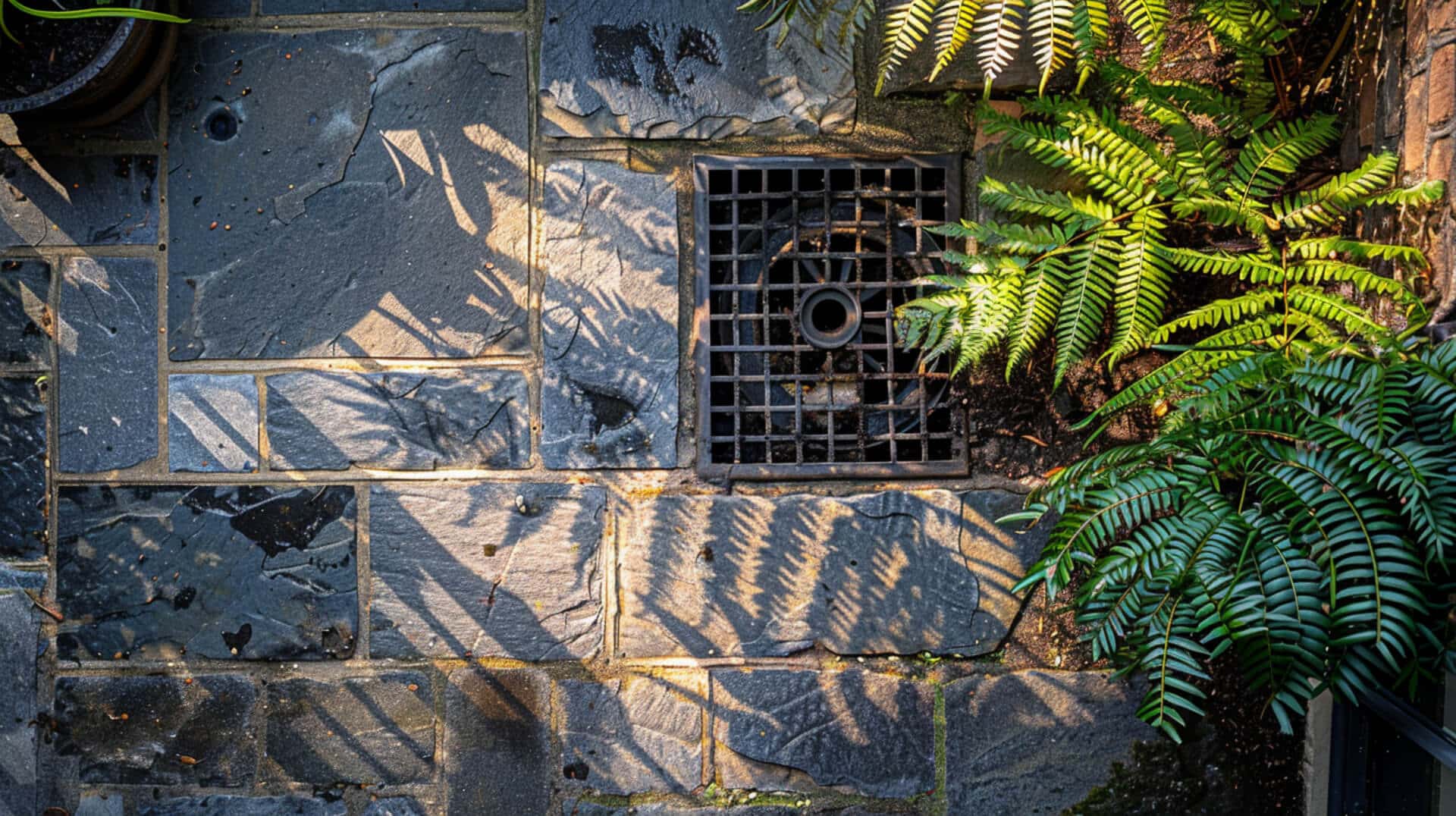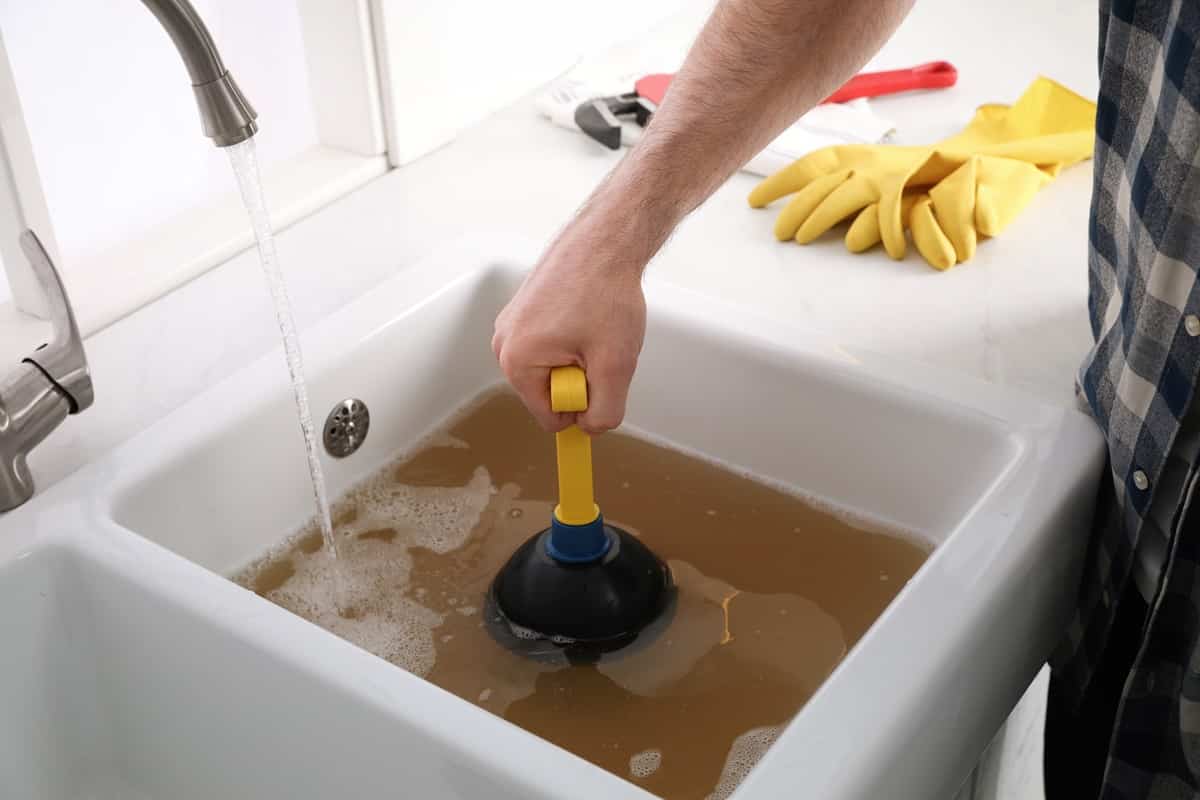 Are Shampoo and Conditioner Cause Drain Blockages?
Are Shampoo and Conditioner Cause Drain Blockages?

What Are the Common Causes of Blocked Drains?
Blocked drains are a frequent issue faced by property owners, business owners, and facility managers. Understanding the primary causes of these blockages is essential for effective prevention and maintenance. This guide will explore the various factors contributing to blocked drains, with a particular focus on how shampoo and conditioner can lead to such problems.
Primary Causes of Blocked Drains
Blocked drains can result from a variety of sources. Common causes include:
- Hair: Often accumulates in showers and sinks, combining with other substances to form clogs.
- Soap: Can create soap scum that adheres to pipes, especially when combined with hard water.
- Fat, Oil, and Grease: Solidify in pipes, leading to blockages known as “fatbergs.
- Food Waste: Items like pasta and rice can expand and obstruct drains.
- Tree Roots: Can infiltrate and damage underground pipes.
- Leaves and Outdoor Debris: Can enter drains during autumn and winter.
- Non-Flushable Items: Wet wipes, cotton swabs, and sanitary products can cause significant blockages.
Importance of Understanding These Causes
Recognising the causes of blocked drains is crucial for implementing effective preventive measures. By identifying the specific factors that contribute to blockages, property owners can take proactive steps to maintain their plumbing systems and avoid costly repairs.
How Shampoo and Conditioner Contribute to Blockages
Shampoo and conditioner are common culprits in drain blockages. These products can leave behind residues that accumulate over time, particularly when combined with hair and soap scum. The chemical properties of these personal care items can lead to the formation of stubborn clogs that impede water flow.
What This Guide Will Cover
This guide will provide a comprehensive overview of the following topics:
- How shampoo and conditioner cause blockages
- Signs of blockages caused by these products
- Preventive measures to avoid such blockages
- Immediate steps to take when a blockage occurs
- Tools and products for clearing blockages
- Professional services for severe blockages
- Regular maintenance tips to prevent future issues
- Environmental impact of shampoo and conditioner blockages
- Practical examples and real-world applications
By addressing these points, this guide aims to equip readers with the knowledge and tools necessary to manage and prevent drain blockages effectively.
How Shampoo and Conditioner Cause Blockages
Shampoo and conditioner are common household products that can contribute to drain blockages. Understanding how these products cause blockages can help in preventing and addressing the issue effectively.
What Happens When Shampoo and Conditioner Enter the Drain?
When shampoo and conditioner are rinsed off, they enter the drain along with water. These products contain various ingredients that can adhere to the walls of the pipes. Over time, this residue accumulates, leading to blockages.
Interaction with Other Substances
Shampoo and conditioner residues often combine with other substances in the drain, such as hair and soap scum. This combination creates a sticky, thick layer that can obstruct water flow. Hair, in particular, acts as a net, trapping more residue and debris, exacerbating the blockage.
Residue Buildup Over Time
The buildup of shampoo and conditioner residues is a gradual process. Each use adds a small amount of residue to the drain. Without regular cleaning, this accumulation can become significant, eventually leading to a complete blockage.
Chemical Properties Leading to Blockages
Shampoo and conditioner contain various chemical compounds, including silicones, oils, and conditioning agents. These substances are designed to adhere to hair, making them prone to sticking to pipe walls as well. The hydrophobic nature of some ingredients means they do not dissolve easily in water, contributing to persistent buildup.
By understanding these mechanisms, property owners, business owners, and facility managers can take proactive steps to prevent and address blockages caused by shampoo and conditioner. Regular maintenance and proper disposal practices are essential in mitigating this common issue.
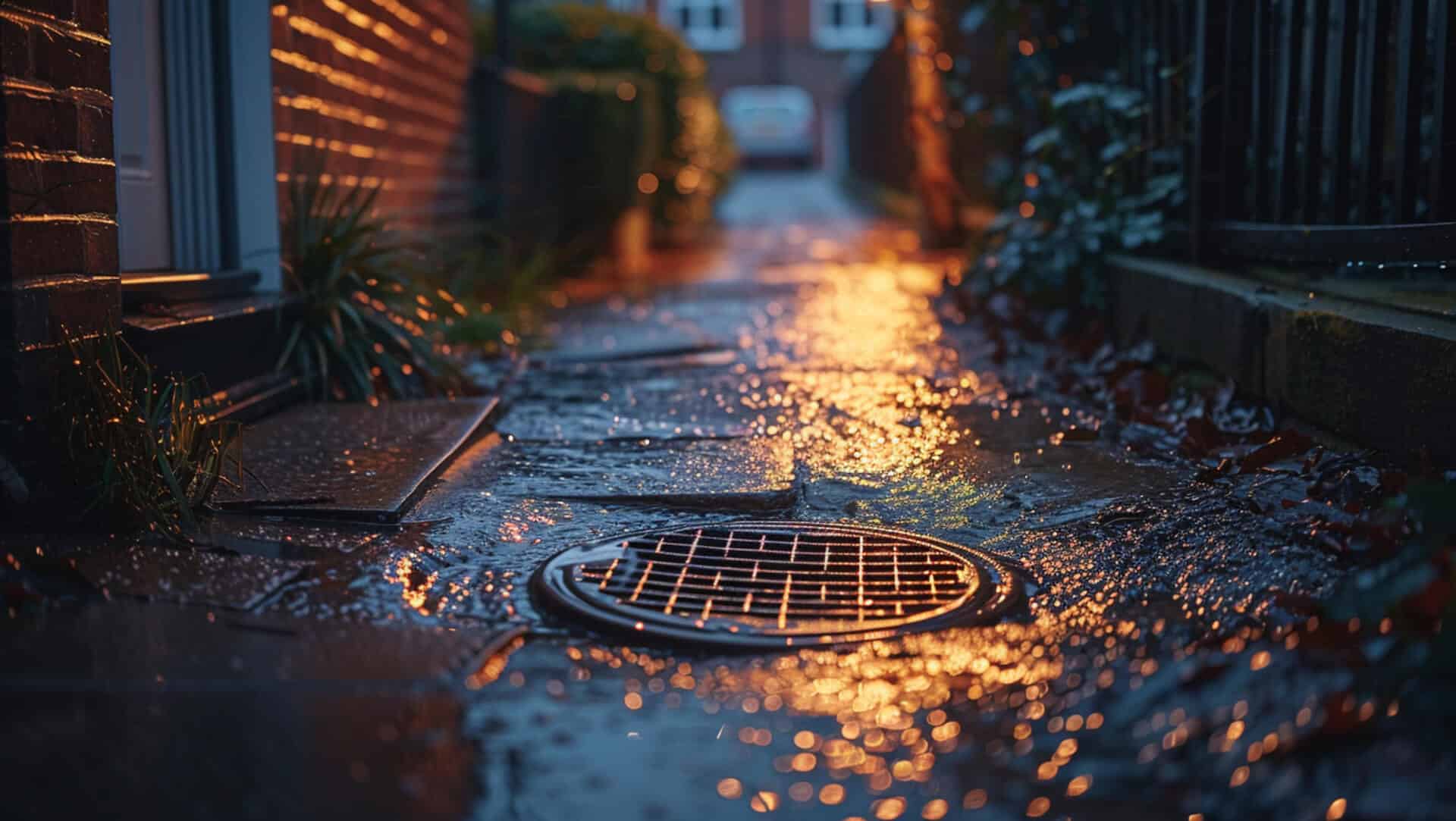
Signs of Blockages Caused by Shampoo and Conditioner
Blocked drains caused by shampoo and conditioner can present specific symptoms. Recognising these signs early can help in addressing the issue before it escalates.
Early Signs of a Blockage
- Slow Draining Water: One of the first indicators is water draining more slowly than usual from sinks, showers, or bathtubs.
- Foul Odours: Accumulated residue can produce unpleasant smells emanating from the drains.
- Gurgling Sounds: Unusual noises in the pipes, such as gurgling, can signal a developing blockage.
Identifying Blockages Specifically Caused by Shampoo and Conditioner
- Residue Buildup: A sticky, greasy residue around the drain opening or on the drain cover can indicate the presence of shampoo and conditioner buildup.
- Combination with Hair: If hair is also present, it can trap shampoo and conditioner residues, making the blockage more apparent.
Common Symptoms of a Partially Blocked Drain
- Water Pooling: Water may pool around the drain area before eventually draining away.
- Intermittent Blockages: The drain may seem to clear temporarily but then block again, indicating partial obstruction.
- Reduced Water Flow: Noticeable reduction in water flow through the drain, even when the tap is fully open.
Differentiating from Other Types of Blockages
- Consistency of Residue: Blockages caused by shampoo and conditioner often have a greasy, sticky consistency, unlike blockages caused by solid objects or food waste.
- Location of Blockage: These blockages are more common in bathroom drains where shampoo and conditioner are frequently used.
By understanding these signs, property owners, business owners, and facility managers can take timely action to prevent and address blockages caused by shampoo and conditioner. Regular maintenance and proper disposal practices are essential in mitigating this common issue.
Preventive Measures for Shampoo and Conditioner Blockages
Preventing blockages caused by shampoo and conditioner requires a combination of tools, proper disposal practices, and regular maintenance routines. Educating users about these measures can significantly reduce the occurrence of blockages.
Tools to Prevent Blockages
- Hair Catchers and Drain Screens: These devices can be placed over drains to catch hair and other debris before they enter the plumbing system.
- Drain Covers: Using drain covers can prevent larger particles from entering the drain and causing blockages.
Proper Disposal Practices
- Dispose of Hair Properly: Instead of washing hair down the drain, collect it and dispose of it in the trash.
- Limit Product Use: Use only the necessary amount of shampoo and conditioner to reduce residue buildup.
Regular Maintenance Routines
- Weekly Cleaning: Pour boiling water down the drain weekly to help dissolve any accumulated residue.
- Natural Cleaning Solutions: Use a mixture of baking soda and vinegar to clean drains naturally and effectively.
- Professional Inspections: Schedule regular inspections with a professional plumber to identify and address potential issues before they become severe.
Educating Users About Preventive Measures
- Informative Signage: Place signs near sinks and showers to remind users of proper disposal practices.
- Educational Materials: Provide brochures or online resources that explain the importance of preventing blockages and how to do so effectively.
- Workshops and Training: Conduct workshops or training sessions for property owners, business owners, and facility managers to educate them on best practices for drain maintenance.
By implementing these preventive measures, property owners, business owners, and facility managers can significantly reduce the risk of blockages caused by shampoo and conditioner, ensuring a more efficient and trouble-free plumbing system.
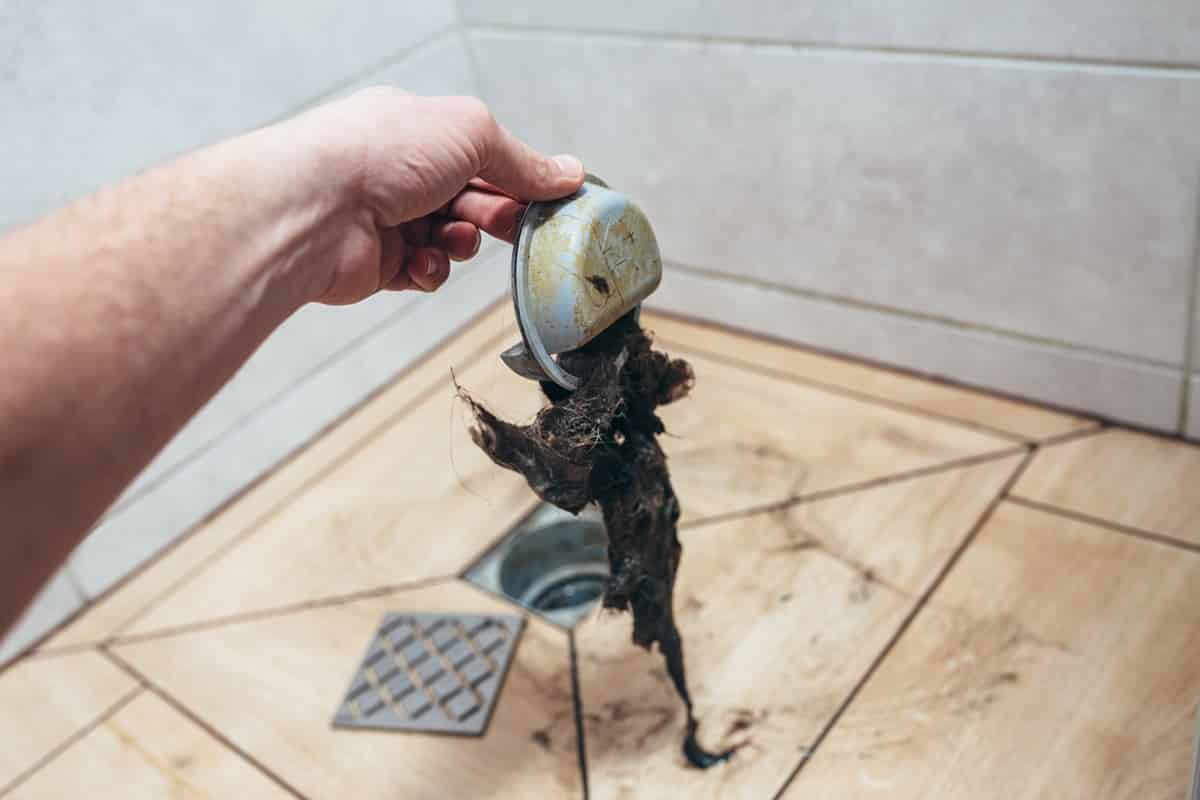
Types of Shampoo and Conditioner That Cause Blockages
Understanding the types of shampoo and conditioner that contribute to drain blockages can help in making informed choices to prevent plumbing issues.
Ingredients More Likely to Cause Blockages
Certain ingredients in shampoo and conditioner are more prone to causing blockages. These include:
- Silicones: Common in conditioners, silicones can create a slippery residue that adheres to pipe walls.
- Oils and Butters: Ingredients like coconut oil and shea butter can solidify in cooler pipes, leading to buildup.
- Conditioning Agents: Quaternary ammonium compounds, often found in conditioners, can form a sticky layer inside drains.
Formulations and Drain Health
Different formulations can affect drain health in various ways:
- Thick Formulas: Thicker shampoos and conditioners are more likely to leave behind residue.
- High-Foaming Products: Products that produce a lot of foam can trap other debris, contributing to blockages.
- Heavy Moisturisers: Products designed for deep conditioning can be more difficult to rinse away completely.
Risks of Non-Biodegradable Products
Non-biodegradable products pose additional risks:
- Persistent Residue: These products do not break down easily, leading to long-term buildup.
- Environmental Impact: Non-biodegradable substances can harm the environment when they eventually enter the water system.
Choosing Products to Prevent Blockages
To reduce the risk of blockages, consider the following:
- Biodegradable Options: Choose shampoos and conditioners labelled as biodegradable.
- Lightweight Formulas: Opt for products with lighter formulations that rinse away more easily.
- Minimal Ingredients: Products with fewer ingredients are less likely to leave behind residue.
By selecting the right products, property owners, business owners, and facility managers can minimise the risk of drain blockages caused by shampoo and conditioner.
Immediate Steps to Take When a Blockage Occurs
When a blockage caused by shampoo and conditioner is suspected, taking immediate action can prevent further complications. Here are the steps to address the issue effectively.
First Actions to Take if You Suspect a Blockage
- Identify the Problem: Check for signs such as slow draining water, foul odours, and gurgling sounds.
- Stop Using the Drain: Avoid using the affected drain to prevent worsening the blockage.
- Remove Visible Debris: If possible, remove any visible hair or debris from the drain opening.
Safely Using DIY Methods to Clear Blockages
- Boiling Water: Pour boiling water down the drain to help dissolve residue buildup.
- Baking Soda and Vinegar: Use a mixture of baking soda and vinegar to break down the blockage. Pour baking soda into the drain, followed by vinegar, and let it sit for 15-30 minutes before flushing with hot water.
- Plunger: Use a plunger to create suction and dislodge the blockage. Ensure there is enough water in the sink or tub to cover the plunger’s base.
When to Avoid Using Chemical Drain Cleaners
- Potential Damage: Chemical drain cleaners can damage pipes, especially if used frequently.
- Environmental Impact: These chemicals can be harmful to the environment.
- Safety Concerns: Chemical cleaners can cause burns and other injuries if not handled properly.
Risks of Ignoring a Blockage
- Worsening Blockage: Ignoring a blockage can lead to a complete obstruction, making it more difficult and costly to resolve.
- Water Damage: Persistent blockages can cause water to back up, leading to potential water damage in the property.
- Health Hazards: Stagnant water and accumulated debris can create a breeding ground for bacteria and mould, posing health risks.
By following these steps, property owners, business owners, and facility managers can address blockages caused by shampoo and conditioner promptly and effectively, minimising potential damage and health risks.
Tools and Products for Clearing Blockages
Clearing blockages caused by shampoo and conditioner requires the right tools and products. Understanding how to use these effectively can help in maintaining a clear and functional drainage system.
Most Effective Tools for Clearing Blockages
- Plunger: A plunger creates suction to dislodge blockages. Ensure there is enough water to cover the plunger’s base for effective use.
- Drain Snake: A flexible metal rope with a spiral end that can be inserted into the drain to hook and pull out clogs.
- TwistOut Stick: A threaded stick designed to twist and pull out hair and other debris from the drain.
- Tweezers: Useful for removing visible hair and debris, especially when the drain cover is removed.
How Enzymatic Cleaners Work
Enzymatic cleaners use natural enzymes to break down organic matter in the drain. These cleaners are eco-friendly and safe for pipes. The enzymes digest the residue, converting it into water and carbon dioxide, which can then be easily flushed away.
Benefits of Using a Drain Snake
- Effectiveness: A drain snake can reach deep into the pipes to remove blockages that are not accessible with other tools.
- Versatility: Suitable for various types of blockages, including those caused by hair, soap scum, and shampoo residue.
- Reusability: A durable tool that can be used multiple times, making it a cost-effective solution.
Using Natural Cleaning Methods Effectively
- Boiling Water: Pour boiling water down the drain weekly to help dissolve accumulated residue.
- Baking Soda and Vinegar: Combine baking soda and vinegar to create a natural cleaning solution. Pour baking soda into the drain, followed by vinegar, and let it sit for 15-30 minutes before flushing with hot water.
- Salt and Baking Soda: Mix salt and baking soda in equal parts and pour into the drain, followed by hot water. This combination helps to break down and flush away residue.
By using these tools and methods, property owners, business owners, and facility managers can effectively clear blockages caused by shampoo and conditioner, ensuring a well-maintained drainage system.
Professional Services for Severe Blockages
Severe blockages caused by shampoo and conditioner may require professional intervention. Understanding when to call a plumber and the services they offer can help in effectively resolving the issue.
When Should You Call a Professional Plumber?
- Persistent Blockages: If DIY methods fail to clear the blockage, it is time to call a professional.
- Recurring Issues: Frequent blockages indicate an underlying problem that needs professional assessment.
- Complete Obstruction: When water does not drain at all, immediate professional help is necessary.
Services Offered for Severe Blockages
- High-Pressure Water Jetting: This method uses high-pressure water to clear blockages and clean the pipes thoroughly.
- CCTV Drain Survey: A camera is inserted into the drain to identify the exact location and cause of the blockage.
- Drainage Pipe Repairs: Professionals can repair or replace damaged pipes that contribute to blockages.
- Drain Installation: Installing new drains or upgrading existing ones to prevent future blockages.
How a CCTV Drain Survey Helps
- Accurate Diagnosis: Identifies the precise location and nature of the blockage.
- Visual Confirmation: Provides a clear view of the inside of the pipes, helping in planning the appropriate intervention.
- Preventive Measures: Helps in identifying potential issues before they become severe blockages.
Benefits of High-Pressure Water Jetting
- Effective Cleaning: Removes all types of blockages, including those caused by shampoo and conditioner residues.
- Non-Invasive: Does not require digging or extensive pipe removal.
- Prevents Future Blockages: Thoroughly cleans the pipes, reducing the likelihood of future blockages.
By understanding these professional services, property owners, business owners, and facility managers can make informed decisions to address severe blockages caused by shampoo and conditioner effectively.
Regular Maintenance Tips to Prevent Blockages
Regular maintenance is essential to prevent blockages caused by shampoo and conditioner. Implementing these practices can help maintain a clear and efficient drainage system.
How Often Should You Clean Your Drains?
- Weekly Cleaning: Pour boiling water down the drain weekly to dissolve any accumulated residue.
- Monthly Cleaning: Use a mixture of baking soda and vinegar monthly to break down buildup and maintain clear pipes.
Best Practices for Regular Inspections
- Visual Inspections: Regularly check for signs of slow draining water, foul odours, and gurgling sounds.
- Professional Inspections: Schedule professional inspections annually to identify and address potential issues before they become severe.
Managing Hard Water Deposits with Water Softeners
- Use of Water Softeners: Instal water softeners to reduce mineral deposits from hard water, which can contribute to blockages.
- Regular Maintenance of Softeners: Ensure water softeners are maintained and serviced regularly to function effectively.
Benefits of Proactive Maintenance
- Prevents Severe Blockages: Regular maintenance helps prevent minor issues from developing into severe blockages.
- Extends Pipe Lifespan: Keeping drains clear reduces wear and tear on pipes, extending their lifespan.
- Improves Drain Efficiency: Regular cleaning and maintenance ensure that water flows smoothly through the drainage system.
By following these regular maintenance tips, property owners, business owners, and facility managers can effectively prevent blockages caused by shampoo and conditioner, ensuring a well-maintained and efficient drainage system.
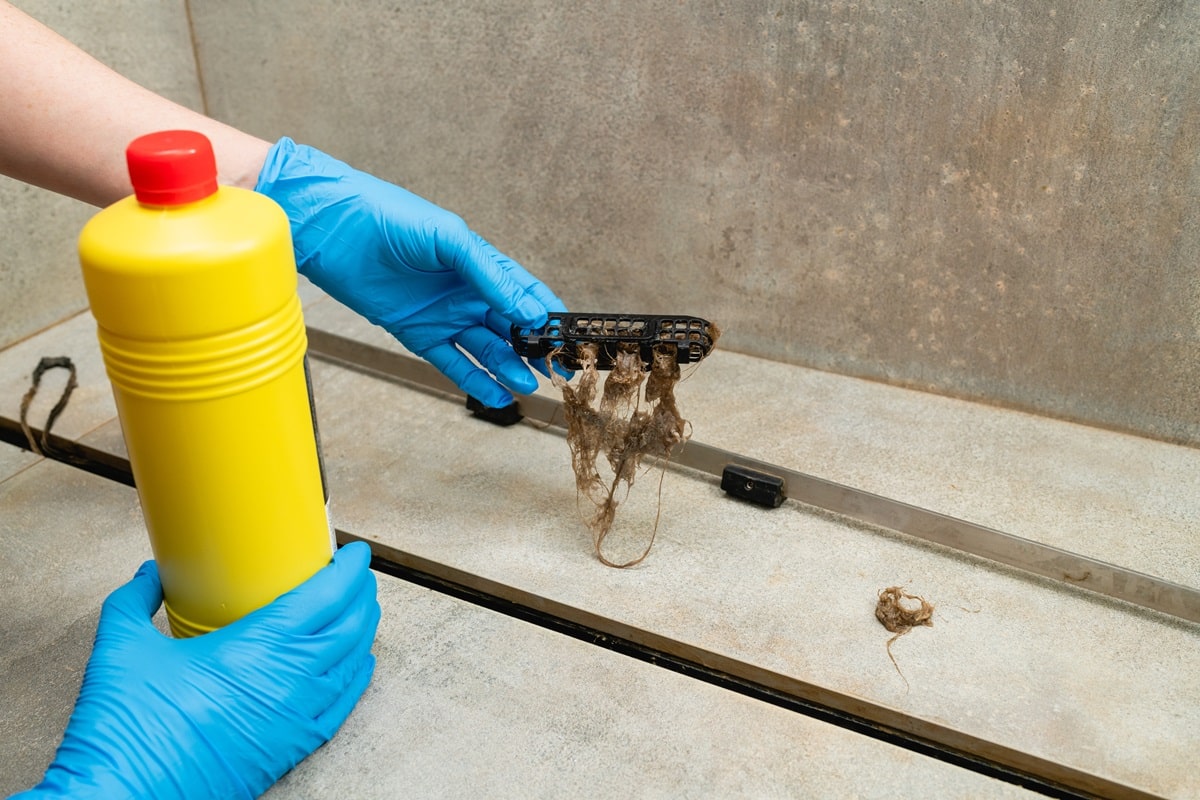
Environmental Impact of Shampoo and Conditioner Blockages
Blocked drains caused by shampoo and conditioner can have significant environmental consequences. Understanding these impacts and adopting eco-friendly practices can mitigate the negative effects.
How Do Blockages Affect the Environment?
- Water Contamination: Blockages can lead to overflow, causing contaminated water to enter natural water bodies.
- Microbial Growth: Organic matter trapped in blockages can promote the growth of harmful bacteria and other microorganisms.
- Increased Chemical Use: Frequent blockages may lead to increased use of chemical drain cleaners, which can harm aquatic life and ecosystems.
Benefits of Using Eco-Friendly Products
- Reduced Residue: Eco-friendly shampoos and conditioners are designed to break down more easily, reducing the likelihood of blockages.
- Lower Environmental Impact: These products are often biodegradable and free from harmful chemicals, making them safer for the environment.
- Sustainable Practices: Using eco-friendly products supports sustainable manufacturing practices and reduces the overall environmental footprint.
Managing Microbial Growth in Drains
- Regular Cleaning: Regularly clean drains using natural methods like baking soda and vinegar to prevent microbial buildup.
- Enzymatic Cleaners: Use enzymatic cleaners that break down organic matter without harming the environment.
- Proper Disposal: Ensure proper disposal of hair and other debris to minimise the organic matter entering the drains.
Long-Term Effects of Improper Disposal
- Persistent Blockages: Improper disposal of shampoo and conditioner can lead to chronic blockages, requiring frequent maintenance and repairs.
- Environmental Degradation: Continuous use of non-biodegradable products contributes to long-term environmental degradation.
- Health Risks: Blockages can create breeding grounds for harmful bacteria, posing health risks to humans and animals.
By adopting eco-friendly practices and understanding the environmental impact of shampoo and conditioner blockages, property owners, business owners, and facility managers can contribute to a healthier and more sustainable environment.
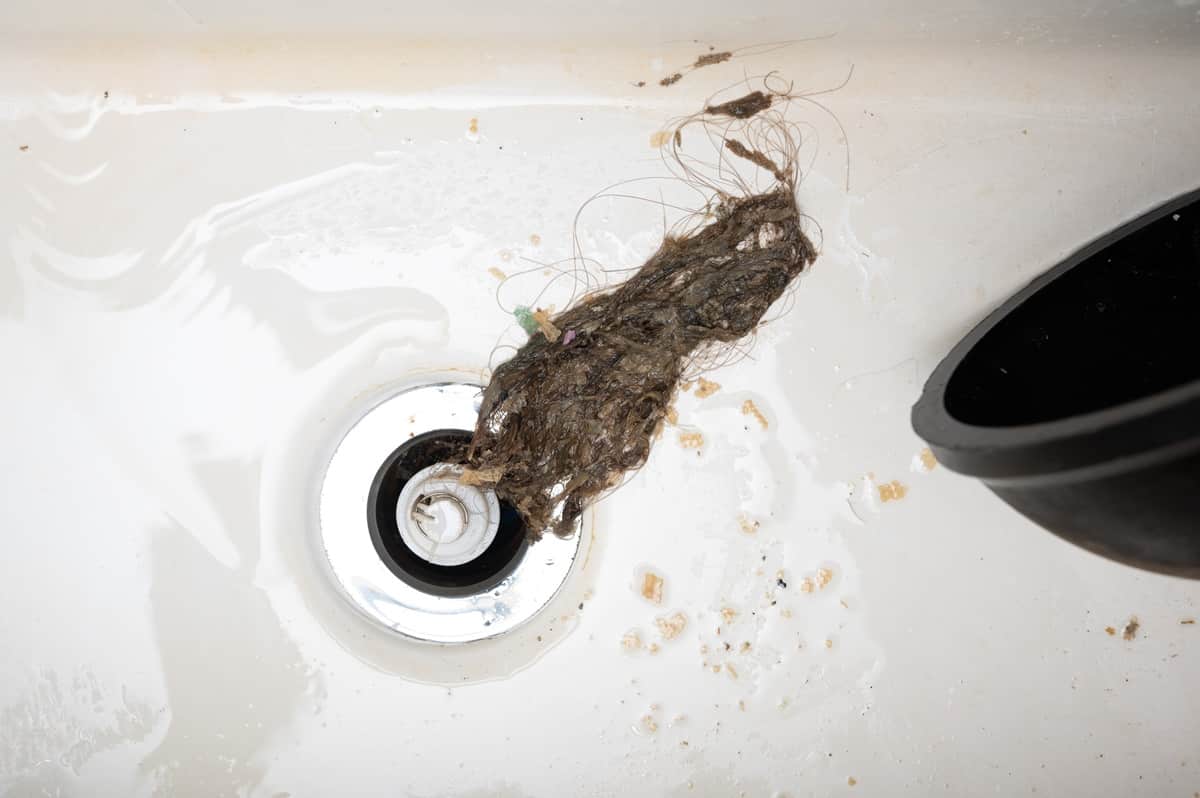
Practical Examples and Real-World Applications
Understanding real-life examples and applications can provide valuable insights into managing blockages caused by shampoo and conditioner. Here are some practical scenarios and solutions.
Real-Life Examples of Blockages
- Residential Properties: In many homes, blockages occur in bathroom drains due to the accumulation of shampoo and conditioner residues combined with hair. These blockages often result in slow draining water and foul odours.
- Commercial Buildings: Hotels and gyms frequently face blockages in shower drains due to the high volume of shampoo and conditioner usage. These blockages can disrupt operations and require immediate attention.
Successful Management by Property Owners
- Regular Maintenance: Homeowners who implement regular maintenance routines, such as using boiling water and natural cleaning solutions, often prevent severe blockages.
- Use of Hair Catchers: Installing hair catchers in bathroom drains has proven effective in reducing the amount of hair and residue entering the pipes.
Challenges Faced by Business Owners
- High Usage Volume: Businesses like hotels and gyms experience higher usage of shampoo and conditioner, leading to more frequent blockages.
- Operational Disruptions: Blockages can cause significant disruptions, requiring immediate and often costly professional intervention.
Effective Preventive Measures for Facility Managers
- Routine Inspections: Regular inspections and maintenance schedules help in early detection and prevention of blockages.
- Educational Programmes: Educating staff and users about proper disposal practices and the use of eco-friendly products can reduce the risk of blockages.
- Professional Services: Engaging professional plumbing services for regular maintenance and inspections ensures that potential issues are addressed promptly.
By examining these practical examples and real-world applications, property owners, business owners, and facility managers can better understand and manage blockages caused by shampoo and conditioner.
Conclusion: Final Thoughts on Preventing Blockages
Key Takeaways from This Guide
Understanding the causes and preventive measures for blockages caused by shampoo and conditioner is essential for maintaining a clear and efficient drainage system. Recognising the signs of blockages, implementing preventive tools, and choosing the right products can significantly reduce the risk of plumbing issues.
Implementing Preventive Measures
- Use Hair Catchers and Drain Screens: These tools can prevent hair and residue from entering the drain.
- Proper Disposal Practices: Dispose of hair and other debris in the trash rather than washing them down the drain.
- Regular Cleaning: Use boiling water, baking soda, and vinegar regularly to keep drains clear.
Importance of Regular Maintenance
Regular maintenance is crucial for preventing severe blockages. It helps in early detection of potential issues, extends the lifespan of pipes, and ensures efficient water flow. Scheduling professional inspections and using water softeners can further enhance drain health.
Staying Informed About Best Practices
- Educational Resources: Access online resources and brochures that provide information on drain care.
- Workshops and Training: Participate in workshops and training sessions to learn about effective preventive measures.
- Professional Advice: Consult with professional plumbers for tailored advice and services.
By following these guidelines, property owners, business owners, and facility managers can effectively prevent blockages caused by shampoo and conditioner, ensuring a well-maintained and efficient drainage system.
